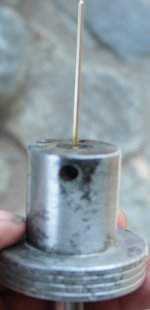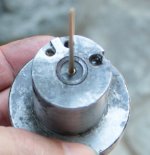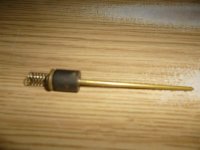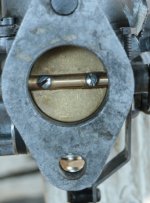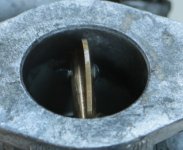The jets on HS2s are typically 0.090" inside diameter. There are 0.100" jets but they are typically used with larger carbs, not HS2s. The needle is what changes (not the jet) and that may have a two or three digit/letter identification stamped into the mounting shoulder... so you won't be able to see it without removing the needle. Unless you have made major changes to the engine since it last ran on these carbs, the existing needles should be OK.
There is an order of steps to carry out when tuning SUs and it sounds like you need to start from scratch. I hate to sound like I am not willing to help but read through the steps in your service manual or visit the Burlen web site to read through their online documentation on tuning SUs.
https://sucarb.co.uk/technical-hs-type-carburetter-description-adjustments
Before making the mixture adjustments make sure that the carb is mechanically set up (jet centered, piston operates freely). Bring the engine to operating temperature before starting to make mixture and tuning adjustments. Make sure both choke and throttle linkages are disconnected and loose (completely loose) before starting to make mixture adjustments.
That said, when did the engine last run correctly and what has changed that you are now dealing with mixture adjustments and tuning?

 Hi Guest!
Hi Guest!

 smilie in place of the real @
smilie in place of the real @
 Pretty Please - add it to our Events forum(s) and add to the calendar! >>
Pretty Please - add it to our Events forum(s) and add to the calendar! >> 
